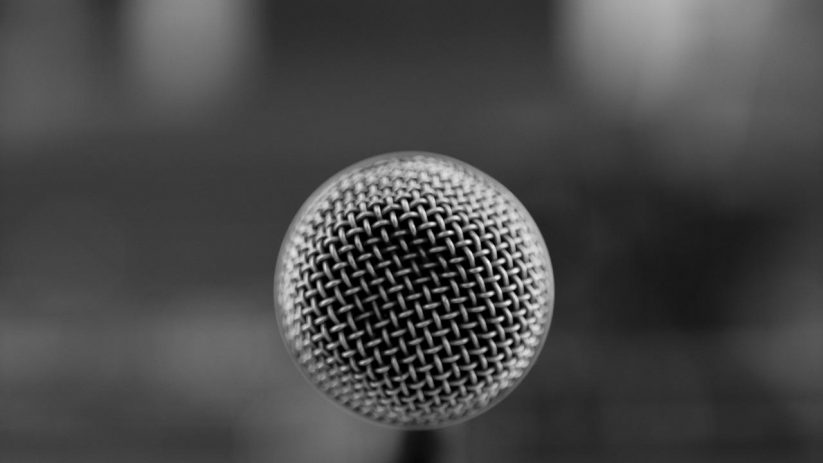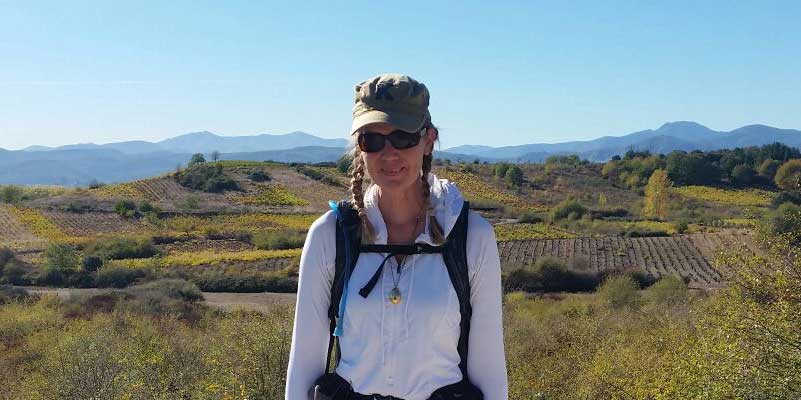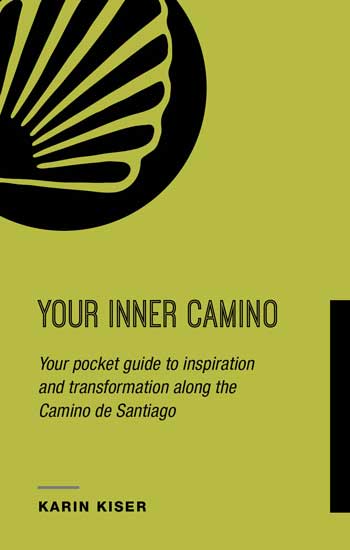Interview with Karin Kiser
We caught up with Karin Kiser, author of ‘Your Inner Camino’, ‘After the Camino’ and ‘Lighten Your Load’. We talked about writing, adventure, The Camino de Santiago and everything in between;
How did you first hear about the Camino?
I spent a semester in Sevilla in college but didn’t hear about the Camino until more than a decade later when I read Paulo Coelho’s book The Pilgrimage. That was 2008. After reading his book I knew I would be walking the Camino someday.
When did you walk your first Camino and what inspired you to do it?
My first Camino was in 2011. At that time my life was completely out of balance. I had two businesses and was working all the time. I was not fulfilled professionally or personally. I needed to step back and reassess my life. Six weeks along the Camino seemed like a perfect opportunity to do that.
How many have you walked since and what would you say is your favourite?
I’ve walked the Camino four times: alone, with others and parts of it in reverse. The most powerful by far was my first Camino. I purposely didn’t read much about the Camino before going. I wanted to have my own experience, without specific expectations or reference points from others. I also didn’t take a phone or a camera – just a basic guidebook. I wanted to completely disconnect from technology and my daily routine and fully immerse myself in the experience.
Can you tell me about the biggest challenge you’ve faced on the Camino personally?
The most significant challenge for me happened during my second Camino. On this particular day I had got a later start than usual, so after a brief rest around 2pm I decided to walk another 12km. I’m in the forest, I’ve got the path to myself and then in the distance I notice a makeshift rest area among the trees. I see some Camino friends I had met several days prior, so I stop to chat a bit. Well, that bit turned into a good long while. By the time we all got moving again, it was pretty late. The three of us arrived at the next town only to discover it had precisely one albergue, no other lodging options and only one bunk still available. One of the Camino friends takes it. The other two of us decide to walk 3km to the next town. We’re tired, we’re annoyed, and before I know it, the two of us are in a heated discussion and my Camino friend storms ahead in a huff. I continue solo. I get to town and approach the first place: booked. The second: booked. The third: you guessed it, booked. Perhaps I would have found something had I a bit more patience. But it was late and everyone was outside at bars and albergues, loudly having a great time while I’m feeling like the ugly stepsister that knows no one and wasn’t invited to the party. So I kept going, another 3km, this time on asphalt with darkness approaching fast. Luckily, I arrived before closing time and found a bed.
Then it got worse. Slamming doors, loud talkers, room lights flipped on hours past the posted quiet time.…no one seemed to be interested in sleeping. The activity finally settled down around 1am and then the real nightmare began. The snoring. Now, remember, this was not my first Camino, so I was used to a certain amount of snoring. This was different. The six other bodies in the room made sounds I never thought possible from a human. One guy had a snore that increased in volume with each breath. I thought he might explode. I was ready to implode. A couple of hours later, a new sound emerged. The cell phone wake-up alarm. Then another one. The snorers did not move. No one got up. No one turned them off. The alarms continued on and off for at least a half hour, perhaps more, but I could take no more. I got up and left.
Now, individually, none of those things would have bothered me too much. But collectively, the argument, the unanticipated 41km, the epic snorers, the never-ending phone alarms, all of it set me up for the meltdown that was soon to come. Hours later, I reached my breaking point. As I was slowly making my way up a steep hill, a thought pops into my head, “where is my ring?” My only purchase during my first Camino – a silver ring with a shell – was not on my finger. I had no idea where I could have left it and no memory of ever taking it off. That’s when I lost it. I just stood there and cried.
Looking back now, all of that needed to happen. That experience led to some powerful realizations later that day that I would not have received had it not happened exactly as it did. As for the ring, it had served its purpose. I bought it in Finisterre at the end of my first Camino and wore it as a reminder to return. Six years later, back on the Camino, the time had come to let it go.
Can you tell about the books you wrote and the reasoning behind them?
The first book is called Your Inner Camino: Your Pocket Guide to Inspiration and Transformation Along the Camino de Santiago. Weighing just 1.4 ounces (40 grams), its small size makes it easy to be take with you on your pilgrimage. It’s for those who want the inner as well as the outer experience of the Camino. When you hit a rough spot or need something to amuse or inspire you along the trail, you can open the book at random and find something to contemplate or boost your spirits. It’s a bit like having a personal coach, a comedian and a therapist all in one – right in your pocket for easy access while you’re walking.
One of the great things about the Camino is that there is time and space to think about everything. Your Inner Camino offers a framework for that contemplation with exercises and suggestions to make the most of your Camino. But even if you don’t walk the Camino, the book is a guide for some of life’s bigger questions. People at a crossroads in life, those in transition from a career or relationship and people looking for something more out of life will all benefit from it.
The second book is called After the Camino: Your Pocket Guide to Integrating the Camino de Santiago into Your Daily Life. It’s for anyone who has walked a pilgrimage route, and especially those who walk for several weeks or more at a time. The Camino de Santiago changes you. Returning home can be disorienting. Unless your family and friends have also been pilgrims, it can be hard for them to relate to your experience. Back at home it is easy to get pulled into the same routines and personal dynamics you had before you left. I know this from personal experience, which is why I wrote After the Camino and made it pocket size. You can literally carry it around with you in your pocket or purse to remind you of the lessons and joys of “the pilgrim way.” It offers strategies to ease the transition, simplify your life and add more meaning to each day.
Do you plan to keep walking?
Absolutely. The Camino is now in my blood!
What legacy are you looking to leave amongst the Camino community?
I hope to inspire others to leave the Camino (and everything, really) in better shape than when they found it.
Ever since my first Camino I was disheartened by the amount of trash I saw. I was determined to play a part in leaving the Camino in better condition than when I found it. Unfortunately, for all my good intentions, the last thing I wanted to do while walking all day fully loaded with a backpack and trekking poles was stop and collect some rubbish. Bending down with a full pack seemed a Herculean task. So it wasn’t until years later when I volunteered at an albergue in Galicia in 2018 that I got my chance. During the two-week commitment I assumed responsibility for the 3km stretch on either side of the albergue and rounded up a dozen bags of waste. It was an incredible experience.
More than one passing pilgrim snapped a photo of me collecting trash, which I found bizarre. Another shot a video. And then there was the pilgrim who, upon seeing me in a ditch on the opposite side of the path, picked up an empty can from his side – with his backpack on – and approached me with a huge smile as he deposited the can in my bag. It was a moment in equal parts touching and humbling. It inspired me to continue.
Instead of walking the Northern route during my remaining time in Spain as I had planned, I went back to Roncesvalles to continue my cleanup effort. I devised a three-day strategy. Day One: walk all day with my backpack and then stay in the same town for three consecutive nights. Day Two: leave the pack in the room and walk back, collecting trash in the direction I had just traversed the day before. Day Three: walk ahead, clearing the path I would be walking tomorrow. Then repeat. I wasn’t able to cover the entire Camino Francés with this strategy, but I put a serious dent in close to 250km of it.
The experience was transformative. It added a new dimension to my work. I decided then that part of the proceeds from my books would be used to support maintenance efforts along the Camino. This year I’m taking my Camino cleanup efforts to the next level by inviting others to join me on the trail this September for some trash pickup.
Your first book was about lightening the load. What does this mean and how can someone begin to achieve it?
Lightening your load means reducing the toxin buildup that has crept into our lives over time. This buildup can include physical toxins in our body and clutter in our home. It also includes mental and emotional toxins such as negativity, fear, criticism, worry and anger. Most of us carry around thoughts and beliefs we don’t really need, and they stress us out and wear us down as well.
The first step to a lighter load is to become aware of how the toxins, clutter and stress are currently getting into your body, mind and personal environment. For example, assessing the quality of the food you eat, the water you drink, the air you breath inside your home, the media you consume and the people you surround yourself with are all great places to start.
The next step is to upgrade some of those things. The book Lighten Your Load offers 35 ways to do that. Incorporating just a few of them over time can have a massive impact on your health and happiness.
Do you believe that connecting with nature is a good way of resetting your mind state?
Yes! When we step into nature, we enter a world that’s bigger than us and bigger than our problems. Being outdoors can quickly put things in their proper perspective. Connecting with nature – or with a single tree in your yard – makes it easier to access the inner peace and calm that is always within us. The mind quiets down. We see things from a wider lens. We sense and feel more.
The Japanese have it totally dialed in when it comes to connecting with nature. They call it forest bathing, and it’s widely used in Japan as a health and wellness practice. Combining mindfulness with spending time in nature has been shown to lower stress, lift depression and even help you sleep.
For me personally, walking in nature is my go-to method for clearing my head. I try to spend as much time outdoors as possible. In fact, most of my books were written from a park bench or along a nature trail. I get some of my best ideas when in nature.
What are the major problems that modern humans face with their mind, body and spirit?
I think one of the biggest problems affecting us is our dependence on all-things-digital. We sit in front of screens more than ever before. All that sedentary screen time can take a toll on our health and well-being. On a physical level, the more we sit in front of screens, the more likely we are to stand, sit and drive with our back hunched, chest caved in and head thrust forward. Not only does this look bad, but it also uses more energy. Our bodies aren’t designed to sit all day, just as our eyes aren’t meant to stare at close-range screens for hours at a time.
On a mental and emotional level, it’s increasingly common to confuse accessibility with connection. Texting, instant messaging and social media are certainly convenient, but they can’t substitute being physically present with another person. It’s the difference between an emoji hug versus an in-person 10-second one. When technology starts to replace rather than augment our social connections, we become out of balance.
Now don’t get me wrong. I’m not suggesting we eliminate technology from our lives. The key is not letting your digital devices dominate your day. For example, I used to check my phone the minute I woke up. I found myself increasingly stressed out and distracted by my inbox rather than focused on what I had intended for the day. No more. Now I wait at least an hour each morning before turning on the phone, so I can start each day with clarity, focus and calm. It’s made a huge difference in both my productivity and my overall mood.
Are you planning to walk another Camino soon?
Yes! I’ll be on the Camino Francés in May and again in September with trash bags in tow.
Where can people get your books?
Paperback editions of Your Inner Camino and After the Camino: www.CaminoChroniclesPress.com
Paperback of Lighten Your Load: www.Amazon.com
Digital editions for all books: www.Amazon.com
Just a reminder, part of the proceeds from the sale of these books goes toward keeping the Camino clean. Thanks so much and ¡buen camino!
You can check out more of Karin’s work and keep up to date with her adventures here:
www.KarinKiser.com
www.CaminoChroniclesPress.com
Twitter: @KarinKiser, @PressCamino
For more information on any of our walking or cycling tours, please contact the travel specialists.


